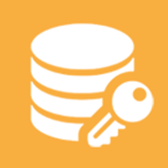
Three out of every four business websites, blogs, and WordPress implementations are vulnerable to malicious attacks. If your site is hacked, it will not only cost your company in terms of restoring the database, site structure and files (back to “before attack” status), but it will also damage your reputation and potentially affect your search engine rankings. However, if you follow a few simple best practices, you can tighten your website security, and effectively protect your company from malicious attacks. Here are some top tips to fix business website and WordPress security issues…
Tip #1: Two factor authentication
An effective method of protecting your WordPress website from brute force attacks is to secure your site’s login. By implementing two-factor authentication you can have an extra layer of security during login. Apart from a username and password, you will need to enter a one-time passcode sent via an SMS to your phone to login to the site. Several plugins like Duo Two-factor authentication, Google Authenticator are available to implement this feature effectively.
Tip #2: Strong password
An effective way of dealing with WordPress security issues is to have a strong password with a minimum of 10 characters. It should be a combination of lowercase letters, uppercase letters, and numbers along with special characters. Passwords should be hard to guess, and they should be changed often. Preferably keep different passwords for different websites. One can use tools like “Strong password generator” to generate passwords that are hard to crack.
Free Download >> Ultimate WordPress Security Guide
Tip #3: Limit login attempts
Hackers use tactics like trying to login to the website repeatedly until they crack the password. If you limit the number of times a person can attempt to login within a specific period one can save the WordPress website from brute-force attacks. There are plugins available that have a locking mechanism to restrict the number of login attempts. They block the IP addresses of users that cross the threshold limit of failed login attempts.
Tip #4: Choose a good hosting provider
You can make use of the latest security hacks, but your efforts will be in vain if the security of your host itself is vulnerable to attacks. Choose a good hosting provider that specializes in WordPress and includes WP firewall, Malware scanning, up-to date PHP and MySQL to ensure a secured hosting.
Tip #5: Scheduled Backups
As a part of an effective security and crisis management strategy, one must have a scheduled backup plan. If something goes wrong, one can rely on the backup solution to restore to the version prior to the damage and get back on track in the least possible time. Plugins like Vaultpress, Backup Buddy help in taking regular backups and provide restore options.
Tip #6: Change admin username
Don’t keep “admin” as the username, since it is the most commonly used string. Hackers use this username first to try and break into the website. If you already have a WordPress website with a username as admin, you will need to create a new user and give him administrative privileges. Assign your posts to the new admin user. Then delete the old admin account from WordPress. Alternatively, you can change the admin username by using a plugin.
Tip #7: Keep your environment current
Whenever a security issue crops up WordPress release an updated version to patch the security flaw. Make sure that you upgrade your WordPress installation whenever a new version is released. Running an older version of WordPress makes it vulnerable. Since the hackers get information regarding the security flaws of older version they can easily target and attack your website if it still runs on older version. Use automatic updates and maintain your website regularly.
Tip #8: Always update plugins and themes
Plugins and themes are like open doors to your personal information. Since they are prone to attacks they need to be secured properly. Keep them up to date just as you do with the WordPress environment. You can easily identify the plugins that require updating in the admin dashboard. Configure automatic updates wherever possible so that everything stays current.
Tip #9: Delete plugins not in use
Inactive plugins on a WordPress website are prone to threats. Because one tends to ignore the updates on those plugins. Hence, it’s a good idea to delete plugins that you are not using and reduce vulnerability. Note that simply deactivating the plugin isn’t enough. You need to delete them to ensure they do not become the entry points for the hackers.
Tip #10: Monitor files and databases
Use security plugins like Wordfence and Acunetix WP security that help you monitor and track changes to the WP files. With security scanning and intrusion detection and prevention features, these plugins provide for a complete security solution.
These were just some of the strategies that one can adapt to Fix WordPress security issues. Protecting the WordPress environment is a continuous process. One needs to be aware of the new threats as well as new tricks and tools to deal with them on a regular basis.
